
The lumbar plays a key role in connecting the fixed, thoracic and sacral sections of the spine. Provides mobility to the spine.
With the development of degenerative processes in the intervertebral plates, signs of osteochondrosis of the lumbar spine appear. A serious illness can make life significantly more difficult, which can lead to reduced ability to work and even disability.
Cause
This disease is becoming more widespread worldwide. This is facilitated by common factors such as physical inactivity, poor environmental conditions, malnutrition, and obesity. However, the heaviest load often falls behind, so it is important to know the causes of lumbar osteochondrosis.
- More than half of the cases of the disease are related to an inherited predisposition that determines the structure of the easily deformed intervertebral discs.
- Working with regular physical exertion is a negative factor that can cause spinal problems.
- Improper posture, exacerbated by hypodynamics, puts the lumbar region under greater strain.
- Spinal cord injuries will often lead to the onset of the disease in the future. Therefore, representatives of professional sports are in danger.
- Many years ago, osteochondrosis was a disease of the elderly - it has its own logic. Discs are more prone to deformation with age. Today, however, this disease is observed in people in their thirties. The impetus for the development of osteochondrosis is the failure of independent execution of complex physical exercises.
- If there are pathologies in the joints, severe hypothermia and sharp tension when lifting a heavy load can cause pain.
- Being overweight puts extra strain on every joint in your spine.
- The onset of the disease is often associated with pathologies in some internal organs: the liver, kidneys, and others.
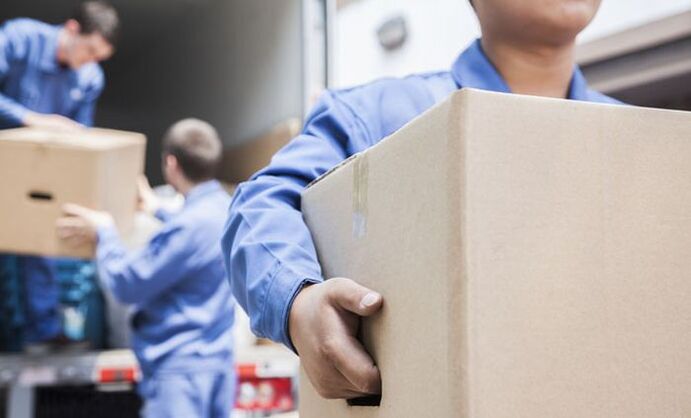
Symptoms
So consider the signs of osteochondrosis of the lumbar spine.
- The first and main symptom of the disease is initially intermittent pain that occurs in the lumbar region during heavy exertion. At first, after resting, it passes and then becomes permanent, covering not only the lower back but also the lower body. During the further destruction of the vertebrae, the pain intensifies and the back feels hot or cold.
- The sensitivity of the skin of the lower body decreases or even disappears completely, and the spasms of the arteries may occur. The fact that the vertebrae are no longer fixed by the plate is fraught with severe damage to the internal organs.
- Symptoms of lumbar osteochondrosis in women are complemented by inflammation of the ovaries, appendages, and uterus. This condition can obscure the main signs and lead to an error in the diagnosis.
- Due to the severe pain, a person usually has to be in an unnatural body position, as a result of which the spine is pushed to the side. Bending appears in posture and tension in gait.
- The spine loses its mobility and flexibility. The effect of lumbodynia is observed when the patient has difficulty straightening up after prolonged work in a bent position.
- Compression of the nerve root in the vertebrae is associated with acute pain and can have consequences in the form of impaired mobility.
- Osteochondrosis of the lumbar spine is also characterized by symptoms of ischemic syndrome, a group of signs associated with decreased blood flow in compressed blood vessels. At first, arterial spasm occurs episodically, accompanied by pain while walking. They pass after rest. Over time, however, the spasm drags on, and the pelvic organs do not receive food, which disrupts their work. Stopping blood flow can lead to paralysis.
- The disease can cause pain in the coccyx. The signs of sacral osteochondrosis differ in some originality, making it more difficult to diagnose. Despite severe, even bursting pain, they are administered to the surrounding tissues, so the patient is unable to pinpoint their location. They are also accompanied by inflammatory processes in the urogenital system. Urinary or urinary incontinence, constipation are common, and the patient has difficulty sitting or moving.
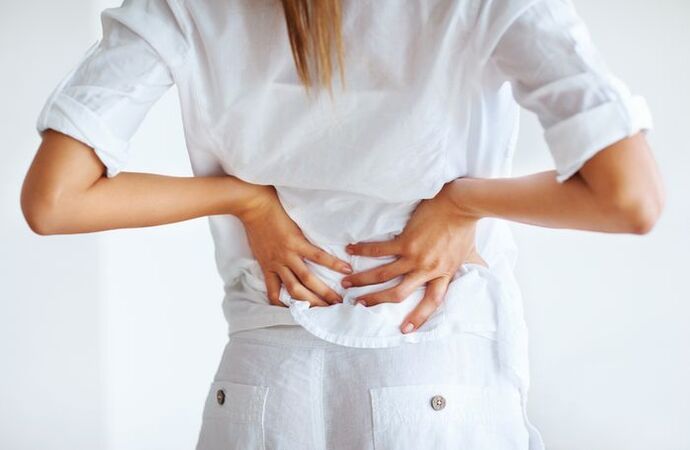
Complications
If the problem is not treated, a progressive disease can lead to serious complications.
- The rupture of the fibrous ring results in pinching of the nerve endings by the protruding nucleus pulposus - an intervertebral hernia occurs.
- Prolonged inflammatory processes in the spine can lead to sciatica - a disease of the roots of the spinal nerves.
- A very serious complication is inflammation of the sciatic nerve, which is characterized not only by severe pain but also by numbness in the limbs.
- Impaired blood flow to the spinal cord can cause compression myelopathy.
- Ponytail syndrome is one of the most serious consequences of osteochondrosis. The bundle of nerve endings protruding from the vertebrae at the end of the spinal cord is responsible for transmitting impulses from the body, allowing the brain to control the work of the body. Their acute inflammation can cause dysfunction of the urogenital system and partial or complete paralysis of the limbs.
Treatment
Osteochondrosis, symptoms, and treatment of the lumbar spine depend on where the nerve ending has been pinched, where pain and decreased sensitivity are felt. If the therapy is started on time, it will be quite successful, but in any case it will require an integrated approach.
Medications are only used to relieve acute pain. The main goal of the therapy is to stop the development of the disease and to put the spine in the right position, to restore normal blood flow in it. This is a complex and lengthy process that requires the use of different rehabilitation methods.
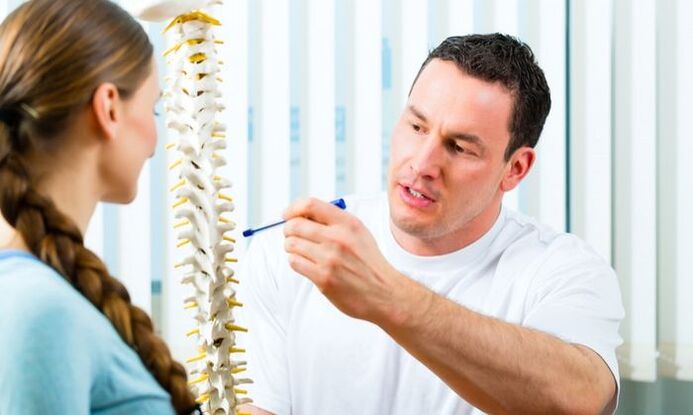
Physiotherapy
Therapeutic gymnastics plays an important role in rehabilitation. It is prescribed a few days after the severe pain has stopped, is selected for each patient, and depends on:
- stage of the disease,
- causes of lumbar osteochondrosis,
- the age of the patient,
- pain localization sites,
- and other factors.
The main goal of therapeutic exercises is to create a reliable muscle ligament that helps reduce the load on the intervertebral discs. In the initial period, several low-load exercises are offered. It is gradually increasing. Over time, special exercises are added to the general exercises.
The gymnastics is performed on the back first. In this case, the load on the spine is minimal and the pain does not increase. The next stage is the exercises, side and then lying on your stomach. You can put a pillow under it and a roller under the joints of your lower limbs.
In the initial stage, all exercises are performed very slowly and carefully. Gradually, as the amplitude of the movements increases, new ones are added to them. After the pain has stopped and the patient's condition has improved, the complex is supplemented with exercises that are performed on all fours, then sitting on a chair and then standing.
If the disease is in chronic form, certain sports - swimming, skiing and others - may be involved, depending on the patient’s well-being. The effectiveness of therapeutic exercises multiplies with regular classes.
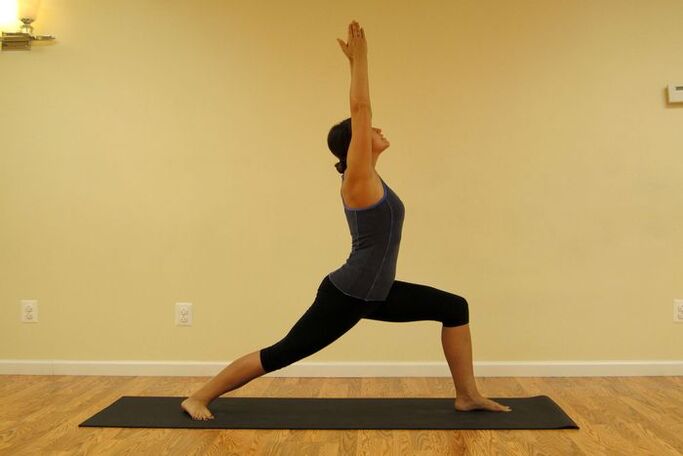
Manual therapy and massage
Manual therapy is one of the oldest and most effective methods used to treat lumbar osteochondrosis and its symptoms. The course includes a number of procedures that can eliminate the cause of limb pain and numbness, relieve muscle fiber tension, restore blood circulation and joint mobility. By using this technique, you can achieve a quick and positive effect that is comparable to the results of therapeutic practices. However, it has some contraindications that should be considered when including it in complex treatment.
Massage is an excellent tool for fighting serious illness. After several times, the patient feels better, the muscle stiffness disappears and the mobility of the joints is restored. But each case of the disease has its own characteristics, and only a qualified professional can prescribe this procedure.
There are several contraindications in the presence of which massage is prohibited for certain categories of patients:
- neoplasms of different natures;
- third degree hypertension;
- moles in the field of massage;
- arrhythmia and other cardiac pathologies;
- blood diseases;
- gynecological diseases and others.
They usually prescribe a traditional type of massage. The first procedures may be accompanied by mild pain that will soon go away.
Severe pain during the session is unacceptable. Vacuum massage with cans can be used to improve blood flow in the affected area.
Your doctor will help you overcome your lumbar osteochondrosis and symptoms and select the most effective treatment. Massage is likely to be on the list of recommendations.
Physiotherapy
The complex of therapeutic measures includes physiotherapy methods. They allow local action in the affected area and the elimination of unpleasant symptoms. The following types of physiotherapy are widely used:
- exposure to an electric or electromagnetic field allows for increased blood flow and metabolic processes in tissues;
- ultraviolet light relieves inflammation, stimulates the production of vitamin D, strengthens the body's defenses;
- ultrasound waves have a high anti-inflammatory effect;
- Balneotherapy is widely used in the treatment and prevention of spinal diseases due to the mild and effective healing effect of mineral waters and medicinal mud.
There are also some contraindications to this method that should be considered when prescribing such procedures.
There are a number of folk recipes that are widely used for lumbar spine osteochondrosis that have been shown to be effective cures. After consultation with a professional, they can be a good addition to the main treatment. Ointments and compresses can be used for rubbing or swallowing. Home-made products can cause allergic reactions. Poisonous plants can also be prescribed, so the dosage of such substances must be strictly adhered to, the body's reaction to their use must be monitored, and a doctor must be consulted.
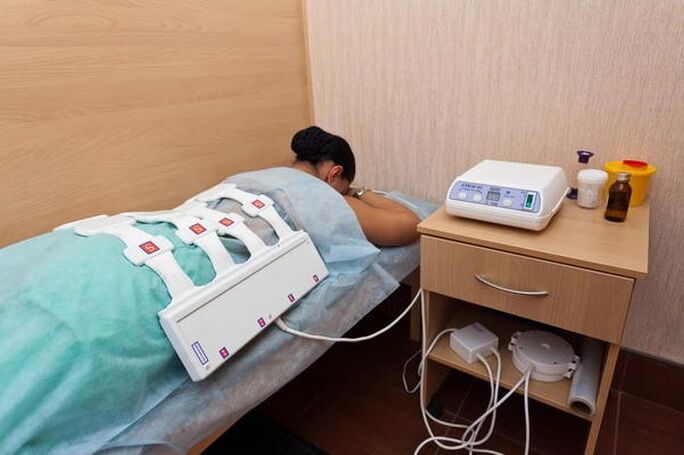
Prevention
Measures to prevent a serious illness must be comprehensive and, above all, include physical activity. It can be long walks at a relaxed pace, regular swimming trips, sports. Walking and running help bind major muscle groups, and water helps you relax and increase range of motion.
A balanced, fractional diet with great attention to high-fiber foods is important for health. Vegetables and fruits create the normal functioning of the digestive system, metabolic products are not left in the intestines, poisoning the body. Thanks to the small portions, the food will be completely processed.
Good rest and proper sleep should be organized on a flat and hard basis. Useful orthopedic mattresses that preserve the natural position of the spine.
The first signs of lumbar osteochondrosis require immediate medical attention and then there is an opportunity for successful treatment and restoration of spinal function.



















